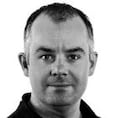On Monday, the BBC broadcast a claim by Michael Christopher Hayes that he was part of the group responsible for the 1974 Birmingham bombings, in which 21 people were killed.
The 69-year-old from south Dublin said he took what he called "collective responsibility" for all of the IRA's actions in England, including the Birmingham pub bombings.
Last year in a newspaper interview, Hayes claimed to have planted the bomb that blew up at the Conservative Party conference in the Grand Hotel, Brighton, in 1984.
He claimed to have planted the bomb with Patrick Magee, the man jailed for life for the attack. Magee was released in 1999 under the Belfast Agreement, after having spent 14 years in prison.
Hayes said he believed Margaret Thatcher had been killed by the bomb, only to realise the following morning that he and Magee had "missed" her. The explosion killed five people.
In 1990, Hayes was named in a Granada TV documentary as one of the men behind the 1974 Birmingham pub bombs. He had denied any role in the Birmingham attacks until this week.
It has also been alleged at different times over the last 25 years that he was behind other IRA bombs, including the attacks at the Harrods luxury department store, Hyde Park and Regent's Park - all in London - at the height of the IRA's bombing campaign in Britain in the early 1980s.
Paramilitary procession
Hayes first came to the attention of British police in 1974 for a relatively minor matter. He was charged as one of eight men who formed a paramilitary procession to mark the death of hunger striker Michael Gaughan.
Then aged 27 and living in Birmingham, Hayes and his co-accused were found to have accompanied the remains of Gaughan from the Isle of Wight to London. They were wearing berets, sunglasses and dark clothing during the procession, which the Crown Prosecution Service said constituted a uniform associated with a political organisation. They were each fined £60.
Two years later, in September 1976, he appeared with two other men before the State’s non-jury Special Criminal Court, which was established to deal with terrorists.
Hayes was charged with IRA membership and the possession of two Armalite rifles, a Magnum revolver, 94 rounds of ammunition, two electric detonators, five hand grenades and seven pounds of explosive mixture.
One of his co-accused on that occasion was Patrick Stagg, a relative of Frank Stagg, who had died in the IRA hunger strikes.
A melee broke out in court when their supporters chanted and cheered as Hayes and his co-accused appeared.
The men had been arrested on a farm in Portlaoise, Co Laois, after a haul of weapons was discovered in a car and in outhouses on the farm.
The car, which had false registration plates and was registered under a fake identity, was also seized.
Gardaí went to the location after reports of gun fire. When they arrived, they recognised one of the men present as Eamonn O’Sullivan.
He was an IRA man from Drimnagh, Dublin, who was on the run after having escaped from the Curragh military prison in Co Kildare.
Hayes, O'Sullivan and Stagg, then aged 21 and from Palmerstown, Dublin, were jailed. Hayes was imprisoned for three years.
The Irish Times called to Hayes’s house in south inner city Dublin on Tuesday, but nobody was home.
His immediate neighbours declined to make any comment, though others from the general area said he lived there alone.
“He’s been there for years, I think it was his parents’ home going back over the years,” said one man.













